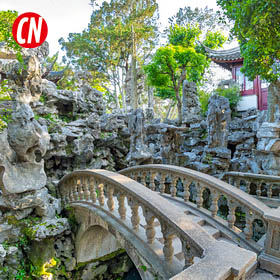The Humble Administrator's Garden
Mother of All Gardens
The Humble Administrator's Garden, as the most iconic one of Suzhou gardens, is a classical private garden marvel in China. The garden is divided into three parts: East, West and Central.
The Humble Administrator’s Garden has numerous titles: World Cultural Heritage, the first batch of national key cultural relics protection units, the first batch of national 5A-class tourist attractions, Top Four Gardens in China… It is a collection of the achievements of China’s classical private gardens, making full use of traditional gardening philosophy.
Manywhere Tips:
The Humble Administrator’s Garden is extremely crowded in holidays.
Wang Xianchen, a frustrated official in the Ming Dynasty, returned to Suzhou, and spent 16 years building a private garden on the site of the Da Hong Temple, The garden was named “The Humble Administrator’s Garden”. From the time when the son of Wang Xianchen lost a gamble on the garden, the garden changed hands several times, such as Haining scholar Chen Zhixuan, Wu Sangui’s son-in-law Wang Yongning were the owners of the garden. Subsequently, the garden was divided into three separate gardens, which are now The Humble Administrator’s Garden West Garden, the Central Garden and East Garden.
The Humble Administrator’s Garden has a vast area of ponds, and most of the buildings in the garden are built on water. 36 Mandarin Ducks Hall 卅六鸳鸯馆 is the main building in the West Garden, a screen divides the hall into north and south rooms, decorated with blue and white stained glass, the north side of the pond had kept 36 pairs of mandarin ducks.
Central Garden is the core of the Humble Administrator’s Garden, Small Flying Rainbow Corridor Bridge 小飞虹, Yuanxiang Hall 远香堂, Fragrance Isle 香洲, Pavilion in the Lotus Breezes 荷风四面亭 and other famous buildings are located here. Standing in the garden to the west, the distant North Temple Pagoda 北寺塔 and the garden scenery blend into one, as if it’s built specifically for the Humble Administrator’s Garden in general, this is one of the most successful cases of Scenery Borrowing, a traditional Chinese gardening philosophy.
The East Garden has more scattered buildings, House of Sweet Smelling Rice 秫香馆, Orchid and Snow Hall 兰雪堂, Celestial Spring Pavilion 天泉亭, etc. The garden museum on the south shows visitors the exquisite gardening techniques and unique methods of Suzhou gardens.
Attractions around the Humble Administrator’s Garden
Tags:
Related
Orsay Museum360
Modern Western Art MastersTaiyuuin Mausoleum360
Mausoleum of Three ShogunatesMunich Frauenkirche360
Devil's FootprintPiazza di Spagna And Spanish Steps360
Memories of Hepburn and Ice CreamMyozenji Temple Museum360
A Gasshozukuri Buddhist TempleAsian Civilisations Museum360
Linking Asia and the WorldBuergersaalkirche360
From Citizen's Hall to Catholic ChurchBridge Of Sighs360
The Last GlimpsePort Of Hakodate And The Red Brick Warehouse360
Witnessing the ChangesQinhuai River Scenic Area360
10 Miles of IndulgenceTodaiji Temple360
Nara Daibutsu in the Great Buddha HallErotic Museum360
Cultures and Arts About Sex






















No comments yet, post the first one!